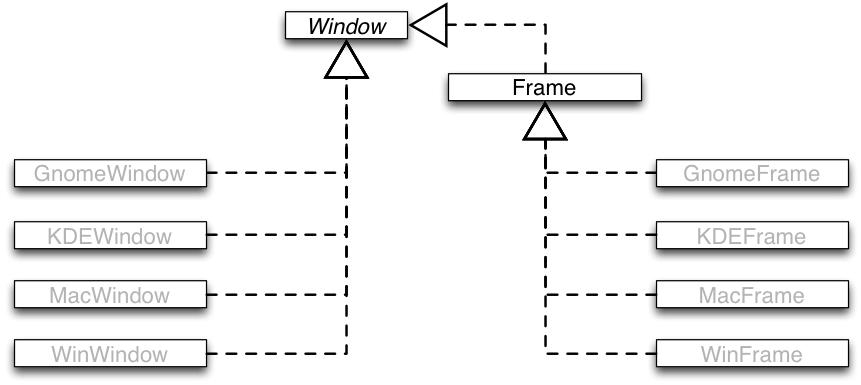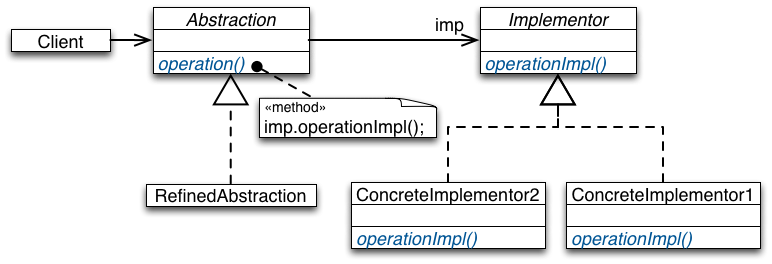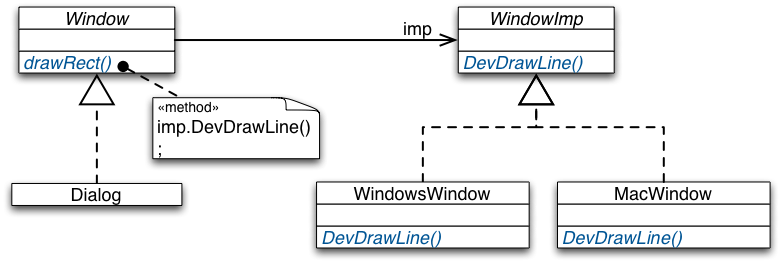Bridge Design Pattern
Intent
Motivation by Example
Several problems:
- Implementation bound to abstraction
- Code duplication and proliferation of classes
Structure
Combine inheritance and object composition:
- Use inheritance to model variations of the abstraction.
- Use object composition to abstract from implementation variations.
The Rationale Underlying the Solution:
- Object composition and inheritance provide different trade-offs for expressing variations.
- Object composition is used to implement dynamic variations with a fixed interface.
- Implementation variations are more of this kind; although not always…
- For static variations inheritance is preferred, because it supports structural variations.
- Abstraction variations are mostly static.
- They often imply variation of structure.
Inheritance allows adding of new field and methods.
Composition demands a fixed interface.
Advantages
Decoupling interface and implementation:
- Implementation can be configured at run-time.
- The implementation in use is hidden inside the abstraction.
Improved extensibility:
- Both abstractions and their implementations become independently extensible by subclassing without a class proliferation.
- Different abstractions and implementations can be combined.




